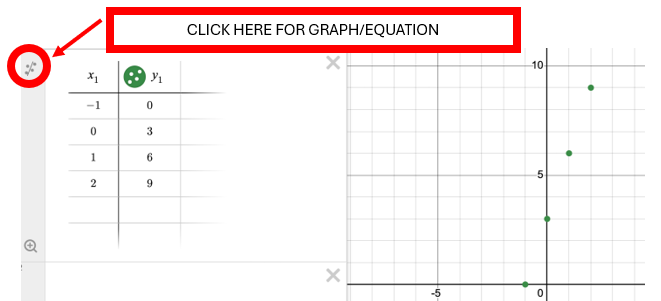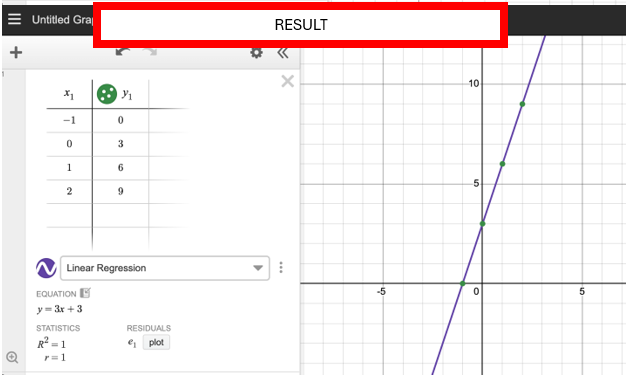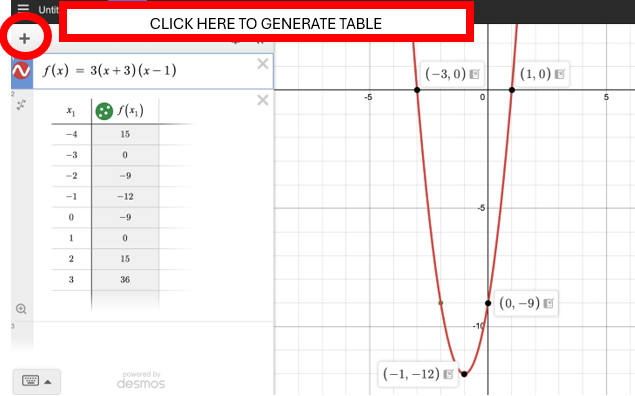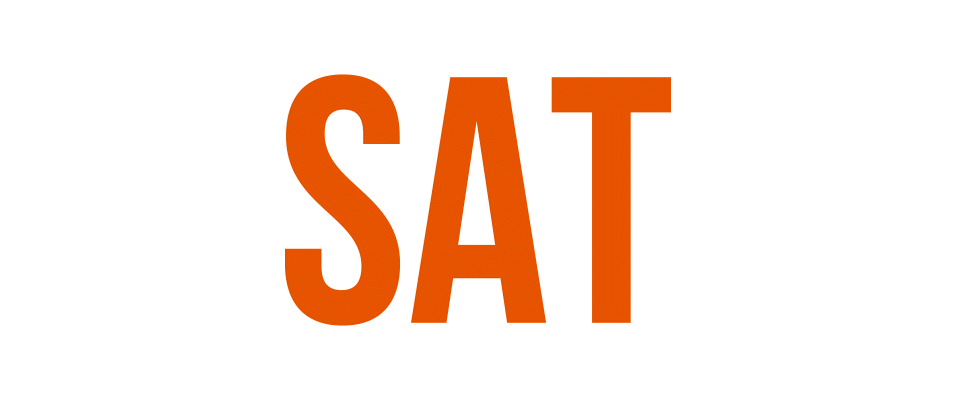The digital SAT has transformed test day with a built-in graphing calculator (henceforth, “Desmos”) that goes far beyond simple number crunching.
In this article, we share three essential ideas—mental models, feedback loops in learning, and leveraging Desmos for the SAT (and math achievement generally)—that can boost your student’s scores and help them feel confident in math.
Idea 1: The Desmos Graphing Calculator supports student acquisition of flexible mental models (between equations, tables, and graphs)
A key advantage of Desmos is its ability to help students develop flexible mental models. Students can quickly translate between the equation of a function, the graph of that function, and the table of that function:
- Tables to Graphs and Equations: By converting numerical data into visual graphs, the calculator aids in spotting trends and relationships. This can even straight up solve certain problems students will encounter. They must know which equation describes the relationship in the table (linear, quadratic), and can do it manually by using y1~mx1 + b, for some sample linear function f(x) =mx + b


- Equations to Tables and Graphs: Students can input a given function into the SAT’s digital calculator and generate a graph and table.

- Graphs to Tables and Equations: Students can take some of the obvious points on the graph (x and y-intercepts, given points) and turn them into a table, enabling the above approach with Desmos calculator. Note: this approach may be time-intensive.
Practicing with the Desmos graphing calculator will help your student flex their mental models of “functions of x”, not only deepening their understanding but also making abstract ideas tangible.
Note that the Desmos does not translate word problems, so it is crucial that your student spends time making the connection to concrete applications: Jerry sells fruit for $4 each (linear); Lua sells insurance to 100 people for $100 per month, and each time she increases the price by $10, she loses 2 customers (quadratic); Shonda has 10 thousand invested in a fund that pays her 6% each year, reinvesting it annually (exponential).
By practicing and learning with the Desmos calculator, students will get comfortable translating familiar shaped graphs into their corresponding equations for quick problem solving. The best practice would integrate word problems as well!
Idea 2: Feedback Loops
Desmos isn’t just a static tool; it’s interactive software that provides immediate feedback, which is critical for learning:
- Promotes Learning Loops: Students engage in a dynamic process of hypothesis, testing, and adjustment. When they input a function, they will see a graph, and, when they change the function, they can instantly see how the table and graph changes.
- Encourages Self-Correction: “Wait that’s not what I wanted…” is a common sentiment in math, but it happens immediately after input with Desmos rather than at the end of an arduous solving process, so precious time doesn’t go to waste
- Transforms Practice into Discovery: Rather than memorizing procedures, learners actively explore and experiment, making the learning process engaging. Here’s one of my favorites: https://teacher.desmos.com/activitybuilder/custom/5c7614041509d870d4838bfd
By turning practice into an interactive exercise, Desmos helps students become active participants in their learning. Make your student’s SAT preparation less daunting and more enjoyable by encouraging practice with this curated math tool!
Idea 3: Leverage Desmos for the SAT
The most significant benefit of familiarizing oneself with Desmos is its direct impact on SAT scoring. Many students find that:
- Simply Knowing the Tool Can Elevate Scores: Mastery of the calculator alone can boost performance, particularly on the most difficult questions.
- Building Test Day Confidence: Students that use Desmos fluently remain sharp and focused on test day. This tool makes the math section accessible and conquerable.
- A Strategic Advantage: By leveraging the calculator’s features, students can tackle simple problems more efficiently, freeing up time for the most challenging problems, which arrive at the end of each module.
The Desmos calculator alone can enable students to score higher on the SAT, and by taking notes on Desmos strategies that are particularly effective (before test day), your student can walk into the SAT with a plan ensuring success.





